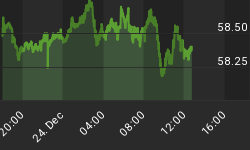Back in December of 2001, Robert Arnott and Clifford Asness published an interesting paper entitled "Does Dividend Policy Foretell Earnings Growth?". Arnott and Asness used more than 100 years of data in an effort to determine the relationship, if any, between the overall payout ratio (the proportion of earnings paid-out to shareholders in the form of dividends) of the companies that comprise the S&P500 Index and the rate of earnings growth for this group of companies over the ensuing 10 years. In particular, the authors wanted to test the popular view that when companies retain more of their current earnings, that is, when companies pay-out a smaller proportion of current earnings as dividends to shareholders, the rate of future earnings growth will be relatively high because the companies will have more money to invest in new opportunities.
What they discovered was that the empirical evidence revealed a strong correlation between the payout ratio and the subsequent earnings growth, but, ironically, the correlation was the exact OPPOSITE of what most people were presuming it to be at the time. Specifically, whereas most people were under the impression that there was an inverse correlation between payout ratio and earnings growth, with a high payout ratio today leading to slower earnings growth in the future and a low payout ratio today leading to faster earnings growth in the future, the data showed that a strong POSITIVE correlation actually existed. In other words, the data clearly indicated that when corporations pay-out a relatively low proportion of their current earnings as dividends their earnings growth over the ensuing 10 years tends to be relatively SLOW, and that high pay-out ratios tend to be followed by 10-year periods of relatively FAST earnings growth.
Arnott and Asness posited some reasons for the above-described correlation. For example, they said that the willingness of company managements to pay-out relatively high proportions of current earnings could be indicative of the managers' confidence in the abilities of their corporations to generate higher earnings in the future; and that greater-than-average payout ratios might lead to the making of better investment decisions -- and, therefore, higher future earnings growth -- by forcing managements to be more discerning when formulating expansion plans. However, A&A's main interest was the existence of such a reliable relationship. The reasons for the relationship were/are open to debate, but the relationship itself was/is an empirical fact.
We've included, below, Exhibits 1 and 3 from the aforementioned Arnott/Asness paper. Both exhibits cover the period from 1950 through to 2001.
Exhibit 1 is a chart of the S&P500's payout ratio and shows that the proportion of earnings paid out as dividends oscillated between a low of around 29% and a high of around 78% over the period in question. Exhibit 3 shows, in table form, how the compound annual rate of real (CPI-adjusted) earnings growth achieved over a 10-year period was linked to the payout ratio at the beginning of the period. For example, it tells us that when the payout ratio was in the lowest quartile then the maximum real annual earnings growth achieved over the ensuing 10 years was +2.6%, the minimum was -3.4%, and the average was -0.7%.


Let's now take a look at the current situation.
According to Barrons magazine, the S&P500 presently has a P/E ratio of 17.94 and a dividend yield (dividend to price, or D/P, ratio) of 1.82%. The payout ratio (dividends divided by earnings, or D/E) is equal to the P/E ratio multiplied by the dividend yield (D/E = P/E x D/P), so the S&P500's current payout ratio is about 33%. This means that the current payout ratio is in the bottom quartile, which, in turn, implies that the annual CPI-adjusted earnings growth rate over the next 10 years will be somewhere between -3.4% and +2.6%.
In other words, today's low dividend payout ratio suggests that the S&P500's real earnings are going to either grow at a very slow rate or SHRINK over the coming 10 years.
We don't see any reason why the relationship described by A&A that has worked for more than 100 years is about to stop working, so we think it's reasonable to expect the rate of real earnings growth to be sub-par over the coming decade. This doesn't, however, mean that the S&P500 Index will fall over the coming year or that it will necessarily perform poorly in nominal dollar terms over the next 10 years.
What it does mean is that over the coming 5-10 years the S&P500 Index is very likely to maintain its downward trend relative to gold and stock market valuations (P/E ratios, etc.) are very likely to contract. It also means that the risk of a large decline in nominal dollar terms occurring at some point over the coming 12 months is much higher than it would normally be due to the potential for the optimistic earnings-growth expectations currently factored into stock prices to come face-to-face with reality.
















